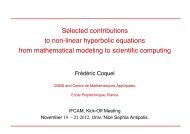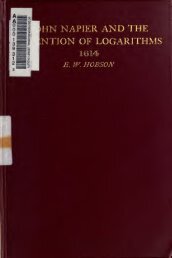The construction of the wonderful canon of logarithms
The construction of the wonderful canon of logarithms
The construction of the wonderful canon of logarithms
Create successful ePaper yourself
Turn your PDF publications into a flip-book with our unique Google optimized e-Paper software.
—<br />
From RABDOLOGIM, Book I.<br />
Notes. 89<br />
Chapter IV.<br />
Note on Decimal Arithmetic.<br />
But if <strong>the</strong>se fractions be unsatisfactory which have different denominators,<br />
owing to <strong>the</strong> difficulty <strong>of</strong> working with <strong>the</strong>m, and those give<br />
more satisfaction whose denominators are always tenths,<br />
<strong>The</strong> preceding<br />
example :—division<br />
<strong>of</strong> 861094 by<br />
432-<br />
118<br />
141<br />
402<br />
429<br />
86i094{i993iJI<br />
432<br />
64<br />
I 36<br />
31 6<br />
118,000<br />
141<br />
402<br />
429<br />
861094,000(1993,273<br />
432<br />
hundredths, thousandths, &c., which fractions that learned<br />
ma<strong>the</strong>matician, "AVwow Sievin, in his Decimal Arithmetic<br />
denotes thus —(7j, (2J,<br />
^3), naming <strong>the</strong>m firsts, seconds,<br />
thirds : since <strong>the</strong>re is <strong>the</strong> same facility in working with <strong>the</strong>se<br />
fractions as with whole numbers, you will be able after completing<br />
<strong>the</strong> ordinary division, and adding a period or comma,<br />
as in <strong>the</strong> margin, to add to <strong>the</strong> dividend or to <strong>the</strong> remainder<br />
one cypher to obtain tenths, two for hundredths, three for<br />
thousandths, or more afterwards as required : and with <strong>the</strong>se<br />
you will be able to proceed with <strong>the</strong> working as above. For<br />
instance, in <strong>the</strong> preceding example, here repeated, to which<br />
we have added three cyphers, <strong>the</strong> quotient will become<br />
1993.273, which signifies 1993 units and 273 thousandth parts<br />
1296<br />
864<br />
3024<br />
I 296<br />
or iVtrti or, according to Stevzn, 1993,2 7 3<br />
: fur<strong>the</strong>r <strong>the</strong> last<br />
remainder, 64, is neglected in this decimal arithmetic because<br />
it is <strong>of</strong> small value, and similarly in like examples.<br />
Simon Stevin, to whom Napier here refers, was bom at Bruges in<br />
1548, and died at <strong>The</strong> Hague in 1620. He published various ma<strong>the</strong>matical<br />
works in Dutch. <strong>The</strong> Tract on Decimal Arithmetic, which<br />
introduced <strong>the</strong> idea <strong>of</strong> decimal fractions and a notation for <strong>the</strong>m, was<br />
published in 1585 in Dutch, under <strong>the</strong> title <strong>of</strong> 'De Thiende,' and in<br />
<strong>the</strong> same year in French, under <strong>the</strong> title <strong>of</strong> ' La Disme.'<br />
We find Briggs, in his Remarks on '<br />
<strong>the</strong> Appendix,' while sometimes<br />
employing <strong>the</strong> point, also using <strong>the</strong> notation 2 5118865 for 2^^-^^^^^,<br />
distinguishing <strong>the</strong> fractional part by retaining <strong>the</strong> line separating <strong>the</strong><br />
numerator and denominator, but omitting <strong>the</strong> latter. <strong>The</strong> form<br />
2|5ii886s has also been used. If we take any number such as<br />
94TWTnT' *h^ following will give an idea <strong>of</strong> some <strong>of</strong> <strong>the</strong> different<br />
notations employed at various times :<br />
_ _ ©0000<br />
940I030O050; 94<br />
I 305;<br />
941305; 941305 94|£305<br />
M<br />
94- 1305-<br />
Notwithstanding



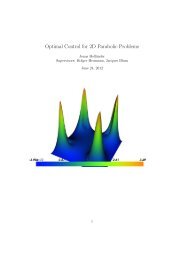
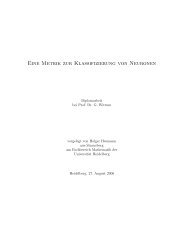
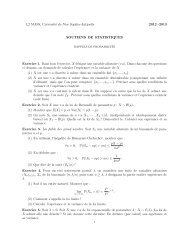
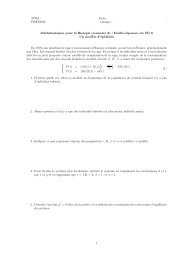


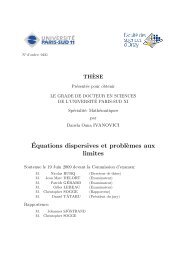
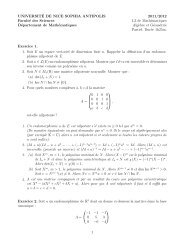
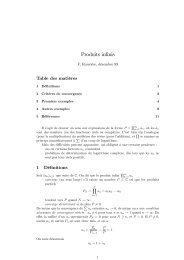
!['eries enti\`eres (+ [D78 Th d'Abel angulaire])](https://img.yumpu.com/14067031/1/184x260/eries-entieres-d78-th-dabel-angulaire.jpg?quality=85)
